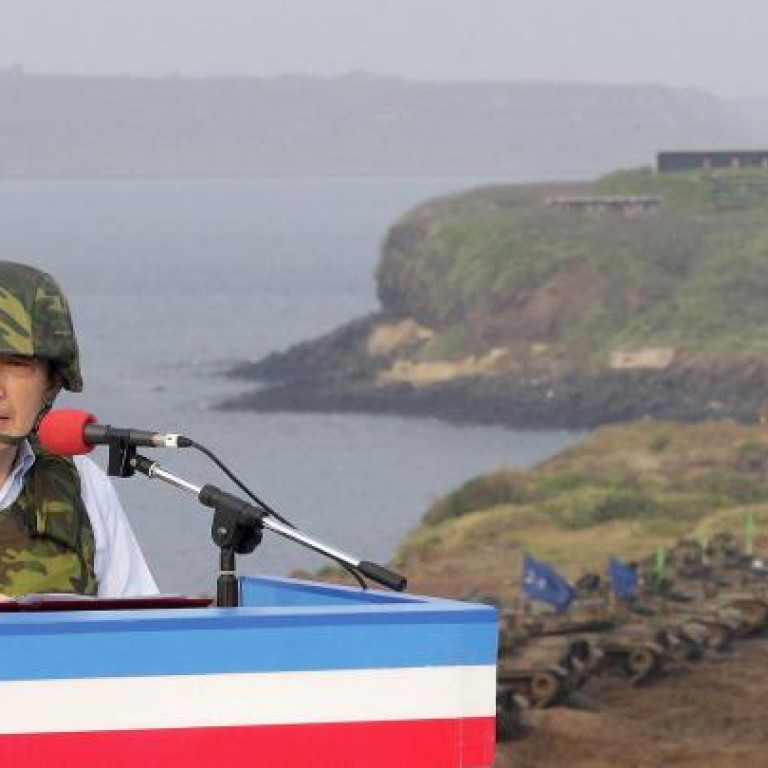
Ma Ying-jeou oversees Taiwanese show of force on Penghu Islands
Facing criticism for defence weakness, president holds first live-fire drills on Penghu of his tenure
Wearing a combat helmet and bulletproof vest, Taiwanese President Ma Ying-jeou travelled to the Penghu Islands yesterday to inspect the biggest live-fire military drills there in five years.

The drill was staged around a scenario that saw Communist Party forces coming under attack as they attempted to take control of Penghu in an amphibious landing, before launching an attack on Taiwan proper.
Ma said that, despite warming cross-strait ties over the past five years, the military should remain vigilant amid what he said was a rapid build-up of arms on the mainland.
"In the face of such a threat, we have to prepare if we are to sustain peace in the Taiwan Strait," Ma said, adding that the holding of live-fire drills was necessary to test the defence capabilities of the Taiwanese military.
The military had not previously staged live-fire drills during the island's biggest annual war games since Ma, who opted for engagement with Beijing and cross-strait peace, took office as president in 2008. This year's exercises have been seen as a response to growing criticism at home of Taiwan's perceived neglect of national defence.
In the face of such a threat, we have to prepare if we are to sustain peace in the Taiwan Strait
Taiwan's military has long relied on American arms sales and the expectation of support from the United States. Rather than depending on foreign countries coming to the rescue, Ma said "the key is whether our defence capabilities can serve as an effective deterrent".
He also called on the military to guard against mainland-based cyberattacks and warned it against any efforts to lure them to the other side with promises of money or women.
Ma said he had "more confidence in the military after seeing the drill", despite the failure of a 76mm gun aboard the patrol ship, Kao Chiang, and a brief malfunction of the firing system of a Cheng Kung-class missile frigate.
The 50-minute drill involved 7,682 troops from the army, air force and navy, and featured the indigenous Thunderbolt-2000 multiple rocket launcher. Eighty-one rockets were fired from nine truck-loaded launchers, targeting "enemies" trying to make an amphibious landing.
Other equipment used included US-made F-16 and F-5 fighter jets and home-made IDF fighters, as well as AH-1W attack helicopters, OH-58D reconnaissance helicopters, M60A3 battle tanks, 155mm howitzers and 120mm mortars.

